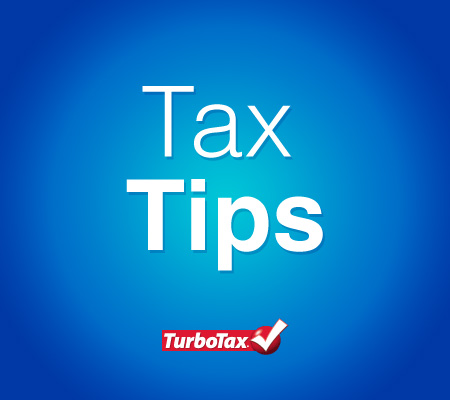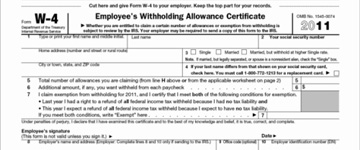Tax Tips After Jan. 1, 2013

TurboTax gives you 10 tax-saving tips for the new year. Find strategies to lower taxes, save money when preparing your tax return and avoid tax penalties.
If you think your tax bill is chiseled in stone at the end of the year, think again. Though it’s true that most money-saving options to defer income or accelerate deductions become much more limited after Dec. 31, there's still a lot you can do to make the tax-filing season cheaper and easier.
Some strategies can help you lower your taxes, sometimes by thousands of dollars. Some help you save time and money when preparing your tax return. Other strategies help you avoid costly penalties and interest on both federal and state taxes. All in all, these 10 tips will lower your blood pressure while keeping more money in your pocket:
1. Contribute to retirement accounts
If you haven’t already funded your retirement account for 2012, do so by April 15, 2013. That’s the deadline for contributions to a traditional IRA, deductible or not, and to a Roth IRA. However, if you have a Keogh or SEP and you get a filing extension to Oct. 15, 2013, you can wait until then to put 2012 contributions into those accounts. To start tax-free compounding as quickly as possible, don’t dawdle in making contributions.
Making a deductible contribution will help you lower your tax bill this year. Plus, your contributions will compound tax-deferred. It’s hard to find a better deal. If you put away $5,000 a year for 20 years in an investment with an average annual 8 percent return, your $100,000 in contributions will grow to $247,000. The same investment in a taxable account would grow to only about $194,000 if you’re in the 25 percent federal tax bracket (and even less if you live in a state with a state income tax to bite into your return).
To qualify for the full annual IRA deduction in 2012, you must either 1) not be eligible to participate in a company retirement plan, or 2) if you are eligible, have an adjusted gross income of $58,000 or less for singles, or $92,000 or less for married couples filing jointly. If you are not eligible for a company plan but your spouse is, your traditional IRA contribution is fully deductible as long as your combined gross income does not exceed $173,000.
For 2012, the maximum IRA contribution you can make is $5,000 ($6,000 if you an adjusted 50 or older by the end of the year). For self-employed people, the maximum annual addition to SEPs and Keoghs for 2012 is $50,000.
Although choosing to contribute to a Roth IRA instead of a traditional IRA will not cut your 2012 tax bill — Roth contributions are not deductible — it could be the better choice because all withdrawals from a Roth can be tax-free in retirement. Withdrawals from a traditional IRA are fully taxable in retirement. To contribute the full $5,000 ($6,000 if you were 50 or older by the end of 2012) to a Roth IRA, you must earn $110,000 a year or less if you're single, or $173,000 a year or less if you’re married and filing a joint return.
The amount you save for making a contribution will vary. If you are in the 25 percent tax bracket and make a deductible IRA contribution of $5,000, you will save $1,250 in taxes the first year. Over time, future contributions will save you thousands, depending on your contribution, your income tax bracket and the number of years you keep the money invested.
2. Make a last-minute estimated tax payment
If you didn’t pay enough to the IRS during the year, you may have a big tax bill staring you in the face. Plus, you might owe significant interest and penalties.
How could that happen? The withholding on your paycheck may be out of whack, or you may have received a big gain from selling stock. According to IRS rules, you must pay 100 percent of last year’s tax liability or 90 percent of this year’s tax, or you will owe an underpayment penalty. If your adjusted gross income for 2011 was more than $150,000, you have to pay more than 110 percent of your 2011 tax liability to be protected from a 2012 underpayment penalty. If your tax payments were a bit light, you may be stuck.
If you make an estimated tax payment by Jan. 15, though, you can erase any penalty for the fourth quarter, but you still will owe a penalty for earlier quarters if you did not send in any estimated payments back then. But if your income windfall arrived after Aug. 31, 2012, you can file Form 2210: Underpayment of Estimated Tax to annualize your estimated tax liability and possibly reduce any extra charges.
A note of caution: Try not to pay too much. It’s better to owe the government a little than to expect a refund. Remember that the IRS doesn’t give you a dime of interest when it borrows your money.
3. Organize your records
Good organization won't cut your taxes. But there are other rewards, and some of them are financial. For many, the biggest hassle at tax time is getting all of the documentation together. This includes last year’s tax return and, this year’s W-2s, 1099s, receipts and so on.
If you really want to make tax season go smoothly, use a personal finance software program like Quicken throughout the year so you have easy access to all the information you need.
Here's how to get started:
- Print out a tax checklist to help you gather all the tax documents you’ll need to complete your tax return.
- Keep all the information that comes in the mail in January, such as W-2s, 1099s and mortgage interest statements. Be careful not to throw out any tax-related documents, even if they don’t look very important.
- Collect receipts and information that you have piled up during the year.
- Group similar documents together, putting them in different file folders if there are enough papers.
- Make sure you know the prices you paid for any stocks or funds you have sold. If you don’t, call your broker before you start to prepare your tax return. Know the details on your income from rental properties. Don’t assume that your tax-free municipal bonds are completely free of taxes. Having this type of information at your fingertips will save you another trip through your files.
4. Find the right forms
You won’t find all of them at the post office or library. Instead, you can go right to the source online. View and download a large catalog of forms and publications on the Internal Revenue Service's website or have them sent to you by mail. You can search for documents as far back as 1980 by number or by date.
The IRS also will refer you to a private website that lists state government sites where you can pick up state forms and publications.
By the way, TurboTax already includes all the forms you need, which takes the hassle out of deciding which forms to use. Just answer simple, plain-English questions, and TurboTax fills out all the right forms for you.
5. Itemize
It’s easier to take the standard deduction, but you may save a bundle if you itemize, especially if you are self-employed, own a home or live in a high-tax area. It’s worth the bother when your qualified expenses add up to more than the 2012 standard deduction of $5,950 for singles and $11,900 for married couples filing jointly. Many deductions are well-known, such as those for mortgage interest and charitable donations. However, taxpayers sometimes overlook miscellaneous expenses, which are deductible if the combined amount adds up to more than 2 percent of your adjusted gross income. These deductions include tax preparation fees, job-hunting expenses, business car expenses and professional dues.
You can also deduct the portion of medical expenses that exceeds 7.5 percent of your adjusted gross income.
6. Don't shy away from a home office deduction
The eligibility rules for claiming a home office deduction have been loosened to allow more filers to claim this break. People who have no fixed location for their businesses can claim a home office deduction if they use the space for administrative or management activities, even if they don’t meet clients there. For example, doctors who consult at various hospitals or plumbers who make house calls can qualify. As always, you must use the space exclusively for business.
Many taxpayers have avoided the home office deduction because it has been regarded as a red flag for an audit. However, if you legitimately qualify for the deduction, there should be no problem.
You are entitled to write off expenses that are associated with the portion of your home where you exclusively conduct business (expenses such as rent, utilities, insurance and housekeeping). The percentage of these costs that is deductible is based on the ratio of the square footage of the office to the total area of the house. A middle-class taxpayer who uses a home office and pays $1,000 a month for a two-bedroom apartment and uses one bedroom exclusively as a home office can easily save $1,000 in taxes a year. People who are in higher tax brackets and have greater expenses can save even more.
One home office trap that used to scare away some taxpayers has been eliminated. In the past, if you used 10 percent of your home for a home office, for example, 10 percent of the profit when you sold did not qualify as tax-free under the rules that let homeowners treat up to $250,000 of profit as tax-free income ($500,000 for married couples filing joint returns). Since 10 percent of the house was an office instead of a home, the IRS said, 10 percent of the profit wasn’t tax-free. But the government has had a change of heart. No longer does a home office put the kibosh on tax-free profit. You do, however, have to pay tax on any profit that results from depreciation claimed for the office after May 6, 1997. It’s taxed at a maximum rate of 25 percent. (Depreciation produces taxable profit because it reduces your tax basis in the home. The lower your basis, the higher your profit.)
7. Provide dependent taxpayer ID NUMBERS on your return
Be sure to plug in Taxpayer Identification Numbers (usually Social Security numbers) for your children and other dependents on your return. Otherwise, the IRS will deny the personal exemption of $3,700 for each dependent and the $1,000 child tax credit for each child under age 17.
Be especially careful if you are divorced. Only one of you can claim your children as dependents, and the IRS has been checking closely lately to make sure spouses aren’t both using their children as deductions. If you forget to include a Social Security number for a child, or if you and your ex-spouse both claim the same child, it’s highly likely that the processing of your return (and any refund you’re expecting) will come to a screeching halt while the IRS contacts you to straighten things out.
The $1,000 child tax credit begins to phase out at $110,000 for married couples filing jointly and at $75,000 for heads of households.
After you have a baby, be sure to file for your child's Social Security card right away so you have the number ready at tax time. Many hospitals will do this automatically for you. If you don’t have the number you need by the tax filing deadline, the IRS says you should file for an extension rather than sending in a return without a required Social Security number.
8. File and pay on time
If you can’t finish your return on time, make sure you file Form 4868 by April 15, 2013. Form 4868 extends the filing deadline by six months, to Oct. 15, 2013. On the form, you need to make a reasonable estimate of your tax liability for 2012 and pay any balance due with your request.
Requesting an extension in a timely manner is especially important if you end up owing tax to the IRS. If you file and pay late, the IRS can slap you with a monthly late-filing penalty of 4.5 percent of the tax owed and a monthly late-payment penalty of 0.5 percent of the tax due. The maximum late-filing penalty is 22.5 percent, and the late-payment penalty tops out at 25 percent. By filing Form 4868, you stop the clock on the costly late-filing penalty.
9. File electronically
Electronic filing works best if you expect a tax refund. Because the IRS processes electronic returns faster than paper ones, you can expect to get your refund three to six weeks earlier. If you have all your documents in order, go ahead and file electronically in January using software like one of the TurboTax programs. If you have your refund deposited directly into your bank account or IRA, the waiting time is even less.
There are other advantages to e-filing, besides a fast refund. The IRS checks your return to make sure that it is complete, which increases your chances of filing an accurate return. Less than 1 percent of electronic returns have errors, compared with 20 percent of paper returns. The IRS also acknowledges that it received your return, a courtesy you don’t get if you file a paper return, even if you send your return by certified mail. That helps you protect yourself from the interest and penalties that accrue if your paper return gets lost.
If you owe money, you can file electronically and then wait until the federal tax filing deadline to send in a check along with Form 1040-V. You may be able to pay with a credit card or through a direct debit.
- With a credit card, expect to pay a service charge of as much as 2.5 percent.
- With direct debit, you may delay the debiting of your bank account until the actual filing deadline.
- Federal e-filing is now included at no additional charge with all TurboTax federal products.
10. Decide WHETHER you need help
TurboTax products can handle the most complex returns with ease (and allow you to file your taxes electronically for a faster refund). You just need to answer simple questions, such as whether you've had a baby, bought a home or had some other life-changing event in the past year. TurboTax will then fill out all the right forms for you.
However, if you still feel uncomfortable doing your taxes on your own, TurboTax offers some economical additional services you can purchase when preparing your return. You can talk to a tax professional with the Ask a Tax Expert service, have your return reviewed by a professional or purchase Audit Defense coverage so that you will be professionally represented in the event of an audit. If you are concerned about preparing your own return, these services will give you added confidence and peace of mind.
5 Life Changes That Should Make You Revisit Your W-4 Withholding
Some life events result in more taxes, while others entitle you to credits and deductions that lower your taxes.
Tax Advantages of Getting Married
Marriage can help reduce the tax burden for married couples who file jointly. Depending on the incomes, so-called "marriage penalties" can be avoided.

